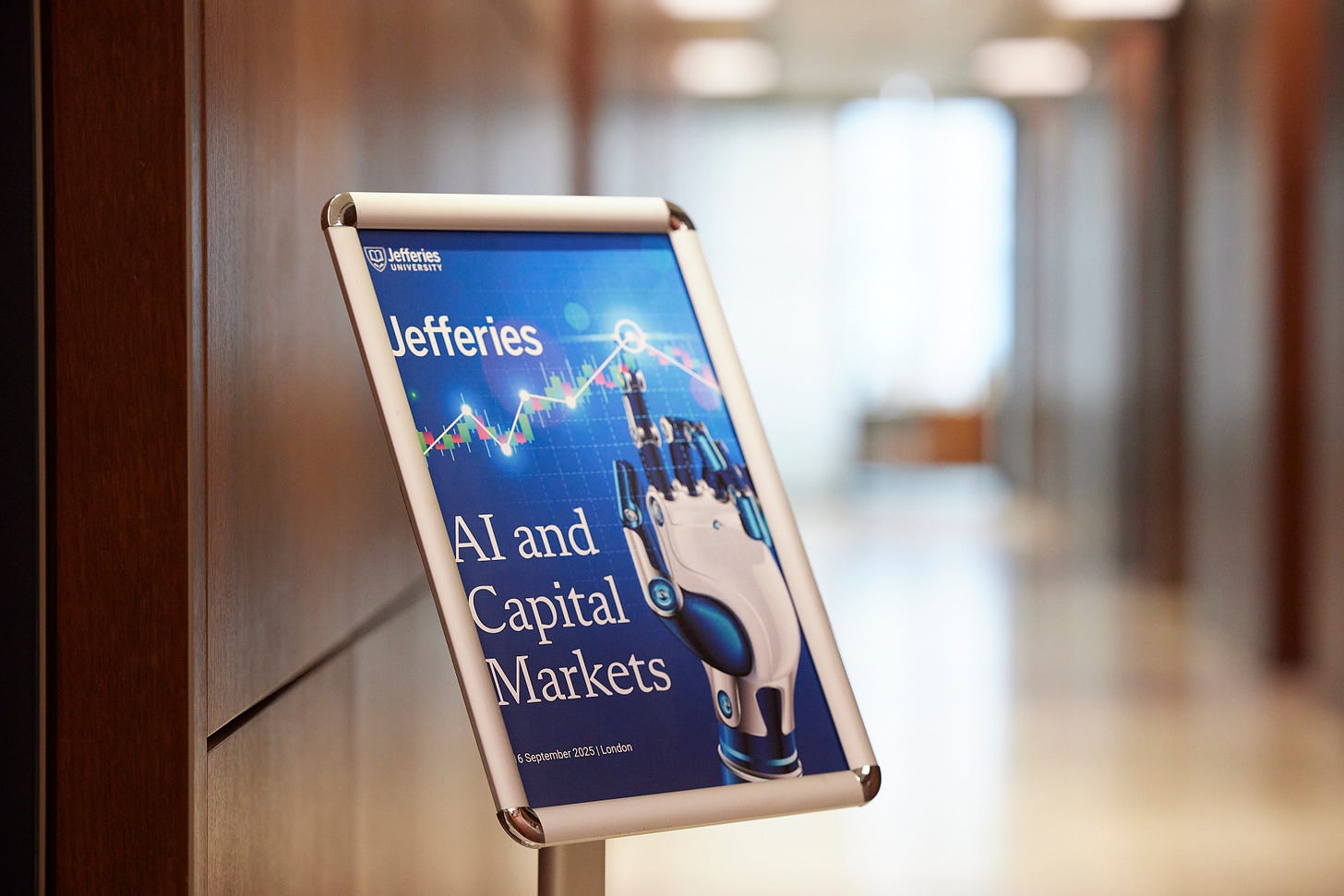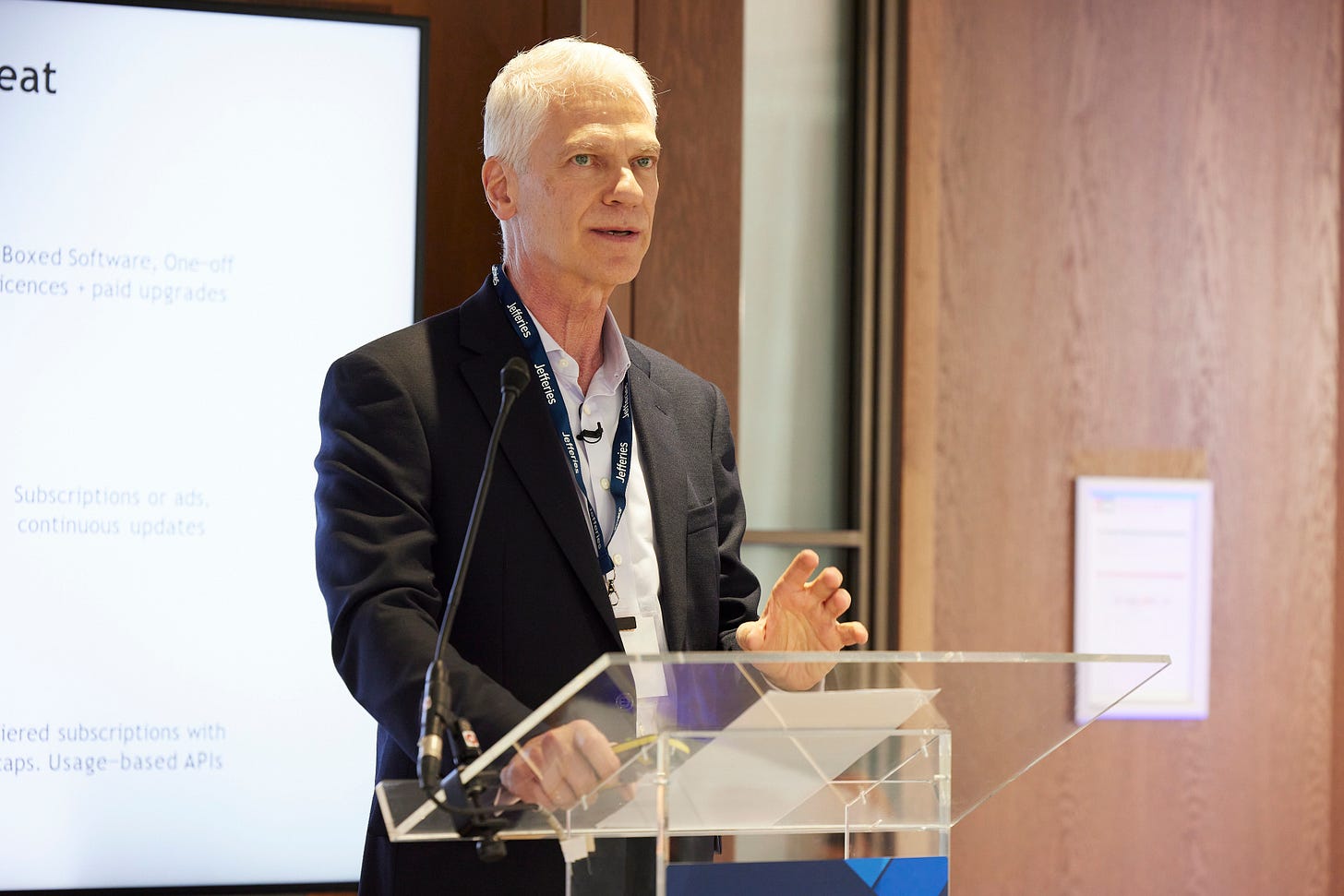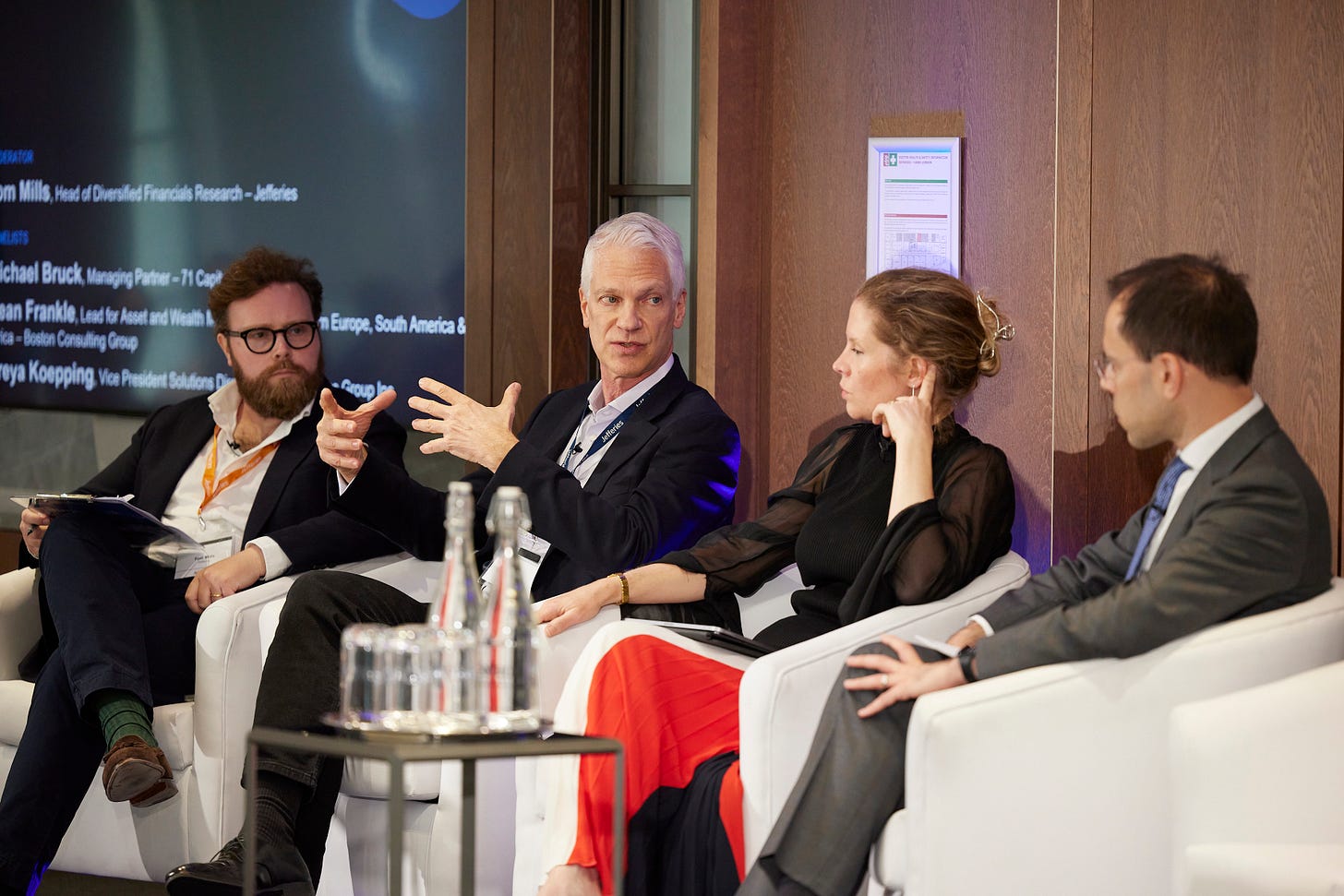Crossing the GenAI Divide: From Augmentation to a 10x Force Multiplier
Key takeaways from my recent Jefferies talks on the real-world application of Generative AI in investment management.
Having spent last week in London for a series of talks that Jefferies invited me to give to investment professionals, I'm struck by how quickly the conversation around AI in investment management has matured. Six months ago in Hong Kong, the focus was on mapping the future, defining the horizons of what AI could do. Now, the questions are far more urgent and pragmatic: Why are so many firms, despite significant investment, struggling to see a real return? And what separates the handful of teams achieving breakthrough results from the vast majority stuck in pilot mode?
The answer is that we’ve entered a new phase. The industry is splitting, and a great "GenAI Divide" is opening up between those who are merely augmenting old processes and those who are fundamentally transforming them. A recent MIT report brought this into sharp focus with a sobering statistic: 95% of organizations report getting zero measurable ROI from their GenAI investments.
This isn't an indictment of the technology. It's a reflection of a profound challenge: How do you hit a target that’s not just moving, but accelerating?
The Paradox: Why Progress is Becoming a Problem
I've lived through the PC, Internet, and Mobile revolutions, but the defining characteristic of this new AI era is its breathtaking velocity. New models and capabilities are released weekly, not yearly. While exciting, this relentless pace creates a paradox. For many organizations, the sheer speed of innovation has become a barrier to adoption. It’s nearly impossible to build a stable foundation of skills when the ground is constantly shifting beneath your feet.
This leads to what I see as three critical barriers:
A Technology Barrier (The "Learning Gap"): Most enterprise tools are static; they don't learn from user feedback. This is why 35% of employees are paying for their own AI tools—the ones their companies provide aren't good enough.
A Human Barrier (The "Proficiency Gap"): We are deploying revolutionary technology to a workforce that hasn't been adequately trained. It’s not about knowing which button to click; it’s about understanding how to structure a problem and collaborate with the AI.
An Organizational Barrier (Silos & Friction): Without a top-down mandate, AI initiatives often become disjointed science projects that fail to deliver a cohesive, firm-wide advantage.
The temptation is to wait for things to "settle down." But that’s precisely the wrong strategy. We have to accept a new reality: the AI you use today is the worst AI you will ever use. The window for competitive advantage is closing, and the greatest danger is standing still.
The "Swiss Army Knife" Strategy: A Playbook for Today
So, how do you move forward? You don't need to wait for the perfect, purpose-built "AI for Asset Management" platform to magically appear. The path forward lies in what I call the "Swiss Army Knife" strategy.
In the early PC era, the spreadsheet was the original Swiss Army Knife. It was a powerful, general-purpose tool we used to build incredibly complex applications because the specialized software hadn't been invented yet. Today, the major LLM platforms—Claude, Gemini, ChatGPT—are the new Swiss Army Knives. They are immensely capable and can be adapted to solve complex problems right now.
We put this to the test at 71 Capital. We chose one of the most complex, time-consuming tasks we face: synthesizing a chaotic virtual data room into a 50-page, institutional-quality investment memo.
The data room was a mess of PDFs, spreadsheets, and transcripts totaling over 21 million tokens—far too large for any model's context window. This is where we discovered the single most important skill in this new paradigm is not "prompt engineering," but "Context Management."
You can't fit the ocean in a bucket. The real, high-value human skill is intelligently selecting the right combination of documents—the financials, transcripts, and reports most relevant for each specific section of the memo. It’s about being a brilliant editor and curator of information before the AI even sees it.
By breaking the problem down section-by-section and feeding the model the precise context it needed for each part, we transformed a multi-week, multi-person process into something that could be largely completed in a day. This wasn't a 20% productivity boost; it was a 10x force multiplier.
From Manual Workflows to an "AI Deal Room OS"
Our experiment was powerful, but still manual. It required a lot of copying, pasting, and managing versions. But it validated a vision for the next logical step: an "AI Deal Room Operating System." Imagine a single, end-to-end system that ingests a messy data room and, guided by a human analyst, uses a team of specialist AI agents to draft a fully cited, institutional-quality memo.
This isn't science fiction. The most forward-thinking firms are already building toward this, moving beyond simply sprinkling AI on legacy platforms and instead, architecting new, AI-native workflows from the ground up.
During the panel discussion at Jefferies, this raised a critical question about the future role of the analyst. Does this automation eliminate the need for junior talent? I believe the opposite is true. By automating the "grunt work" of data collation, we liberate analysts to focus on higher-value tasks: deeper critical thinking, meeting with management teams, and—as one panelist astutely noted—perhaps even getting out of the office to find physical insights you can't get from a screen. The job becomes less about finding the data and more about what you do with it.
Will You Cross the Divide?
The investment industry is at a strategic inflection point. The choice is no longer if you will adopt AI, but how. Will you stay on the side of incremental augmentation, getting marginal gains from legacy tools? Or will you cross the divide and embrace a transformative approach?
The path to a 10x advantage requires a shift in mindset. It means empowering your teams with new skills like Context Management. It means reimagining core workflows. And it means starting now.
I’ll leave you with a thought from my former mentor at Intel, Andy Grove. He used to say that in times of great change, "Your tendency will almost always be to wait too long. Yet the consequences of being early are less onerous than the consequences of being late."
With AI, the greatest danger truly is standing still.




